Don't you just hate leaving all that unused ketchup in an otherwise empty bottle? No matter how much tapping, shaking or squeezing you do, you'll always leave some behind. It's the same with other foods that stubbornly stick to the sides of their containers. And that's not only wasteful but also means tedious rinsing before recycling.
Doctor Michaela Muller is trying to solve this problem. As a polymer chemist, she's working on an applied research project at the Fraunhofer Institute for Interfacial Engineering and Biotechnology in Germany. Another Fraunhofer institute -- Process Engineering and Packaging IVV -- is also involved, along with industrial partners and the Munich University of Technology. The project was initiated by the food manufacturing firm Nestle.
Although finding non-stick surfaces for packaging isn't new, Muller's approach involves plasma coating the insides of bottles. While it's possible to make coatings using other methods, the resulting layers would be too thick.
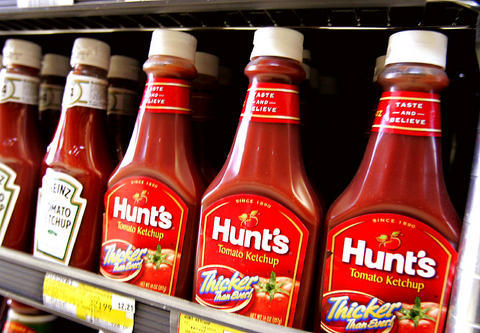
PHOTO: AP
"We need a very thin coating and only plasma processes will give these very thin coatings in the range of nanometers," Muller says.
The method is remarkably simple. Muller places the bottle to be coated inside a vacuum chamber with an electrode inside the bottle and another electrode outside it. She then introduces a polymerizable gas and switches on an electric current. As the plasma glows, it forms an ultra-thin film of polymer on the inside of the bottle within seconds. By adjusting time, gas flow and current, films of around 20 nanometers or less are deposited.
Although Muller is secretive about the composition of this luminous gas, she says that it contains precursor molecules for the plasma polymerization process.
"If the coating is only nanometers thick, the adhesion is very strong to the substrate," Muller says.
Not only is the polymer inert -- it does not react with foodstuffs -- but the amount used is tiny.
So what keeps the ketchup from sticking? This isn't nanotechnology, but chemical interactions between the food and the polymer, which is designed to repel specific food groups. At the same time it's hydrophobic, which allows water to run off easily, but overall this isn't the same as water-repelling clothing or self-cleaning glass.
"Mainly it's the chemistry," Muller says. "We choose the right chemical groups that have very low interaction forces with other molecules. The food group composition strongly influences the emptying properties."
Over the next two years, Muller will perfect the formula for the polymer coating to more than halve leftover traces. Two or three different types of coatings may be needed for different food groups. Her fellow scientists are looking at issues such as mechanical stress resistance, temperature fluctuations and contact with acids or alkalis.
It's not just going to be ketchup lovers who'll enjoy the results. Cosmetics, chemicals and motor oils, along with anything else that's sold in a container and leaves wasteful residues, will benefit. And because the process could be applied to foils, much larger containers may be possible too.
Philip Barlow is the scientific and technical adviser to the Food Innovation Research Centre at Sheffield Hallam University. He points out that consumers have already seen a change from glass to squeezy plastic bottles, making it easier for a product such as ketchup to slip out.
But he says it will be important to conduct food safety tests to ensure the new coating is not a contaminant.
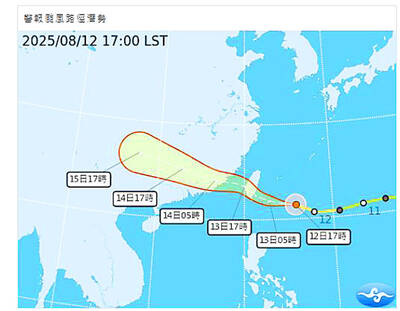
GET TO SAFETY: Authorities were scrambling to evacuate nearly 700 people in Hualien County to prepare for overflow from a natural dam formed by a previous typhoon Typhoon Podul yesterday intensified and accelerated as it neared Taiwan, with the impact expected to be felt overnight, the Central Weather Administration (CWA) said, while the Directorate-General of Personnel Administration announced that schools and government offices in most areas of southern and eastern Taiwan would be closed today. The affected regions are Tainan, Kaohsiung and Chiayi City, and Yunlin, Chiayi, Pingtung, Hualien and Taitung counties, as well as the outlying Penghu County. As of 10pm last night, the storm was about 370km east-southeast of Taitung County, moving west-northwest at 27kph, CWA data showed. With a radius of 120km, Podul is carrying maximum sustained
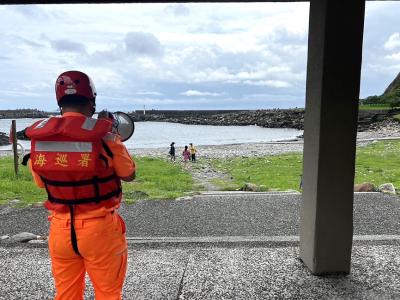
Tropical Storm Podul strengthened into a typhoon at 8pm yesterday, the Central Weather Administration (CWA) said, with a sea warning to be issued late last night or early this morning. As of 8pm, the typhoon was 1,020km east of Oluanpi (鵝鑾鼻), Taiwan’s southernmost tip, moving west at 23kph. The storm carried maximum sustained winds of 119kph and gusts reaching 155kph, the CWA said. Based on the tropical storm’s trajectory, a land warning could be issued any time from midday today, it added. CWA forecaster Chang Chun-yao (張竣堯) said Podul is a fast-moving storm that is forecast to bring its heaviest rainfall and strongest
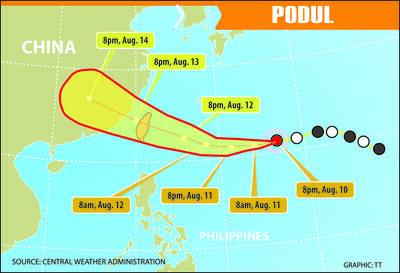
TRAJECTORY: The severe tropical storm is predicted to be closest to Taiwan on Wednesday and Thursday, and would influence the nation to varying degrees, a forecaster said The Central Weather Administration (CWA) yesterday said it would likely issue a sea warning for Tropical Storm Podul tomorrow morning and a land warning that evening at the earliest. CWA forecaster Lin Ting-yi (林定宜) said the severe tropical storm is predicted to be closest to Taiwan on Wednesday and Thursday. As of 2pm yesterday, the storm was moving west at 21kph and packing sustained winds of 108kph and gusts of up to 136.8kph, the CWA said. Lin said that the tropical storm was about 1,710km east of Oluanpi (鵝鑾鼻), Taiwan’s southernmost tip, with two possible trajectories over the next one
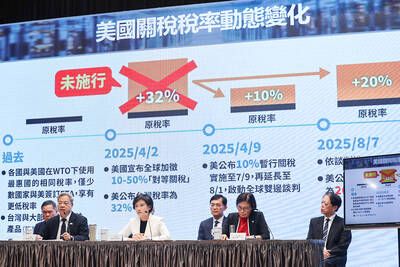
TALKS CONTINUE: Although an agreement has not been reached with Washington, lowering the tariff from 32 percent to 20 percent is still progress, the vice premier said Taiwan would strive for a better US tariff rate in negotiations, with the goal being not just lowering the current 20-percent tariff rate, but also securing an exemption from tariff stacking, Vice Premier Cheng Li-chiun (鄭麗君) said yesterday. Cheng made the remarks at a news conference at the Executive Yuan explaining the new US tariffs and the government’s plans for supporting affected industries. US President Donald Trump on July 31 announced a new tariff rate of 20 percent on Taiwan’s exports to the US starting on Thursday last week, and the Office of Trade Negotiations on Friday confirmed that it